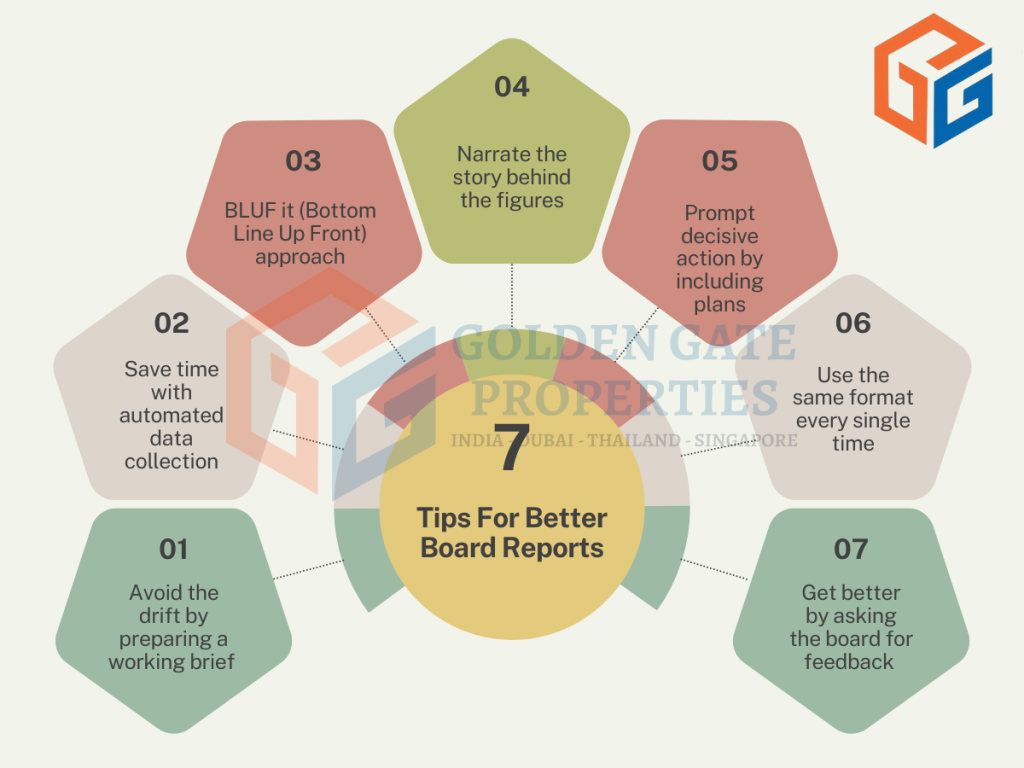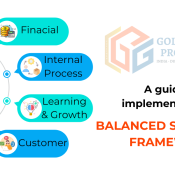
A Guide to Better Board Reporting
Board members rely on board meeting materials and reports for critical updates, which assist them in focusing on major concerns that may jeopardise the company’s performance.
However, a McKinsey poll from 2022 revealed a paradox: while spending 19% more time on board work than before the epidemic, board members fail to produce a greater influence on the organization’s total value.
This raises the question of whether management teams keep boardrooms informed of current events, allowing them to provide relevant strategic insights.
Given how busy board members are, each report you publish should be carefully crafted to assist your directors in doing their duties more successfully.
With this in mind, we’ve compiled a list of 7 recommendations for writing excellent reports that can assist board members achieve maximum impact for your organisation.
Why is Board Reporting Important?
Another intriguing finding from the McKinsey survey: 83% of high-impact boards report that board members seek relevant information beyond what management gives. This highlights the significance of looking beyond basic data.
Board reports often contain a wide range of critical information, such as the company’s financial health, market trends, and operational success. By combining committee reports from several corporate branches, they create a single source of truth, assisting board members in strategic decision-making.
However, good board reports should give an overview of the organisation, allowing directors to steer both immediate actions and long-term strategic objectives effectively.
7 Tips To Help You Improve Board Reports

1. Prepare a working brief to prevent drift.
“Make sure your reports focus on what you need to address at the time, rather than everything. Otherwise, your talk will go off course as you become preoccupied with the specifics.”
– Dr P V Siddharth – CEO – Golden Gate Properties.
Begin by setting down the primary purpose of your board report. This will allow you to keep the larger picture in mind while processing the data and extracting important information.
The brief will also act as a guide for those who will give the material required for the report. As a result, it must include a list of strategic goals and associated critical KPIs.
A board of directors report usually includes financial information from your financial statements, which are prepared by the finance team, led by the CFO. However, this is not the only information needed.
You can also add measurements or key performance indicators (KPIs) from other departments like as sales and operations, product roadmaps, recognised strategies, and more.
Note: Just because you have a lot of data, this doesn’t mean the board needs to see everything. When you overwhelm the board with too much data, they’ll lose focus on what’s crucial— which can lead to ineffective advice.
2. Save time by automating data collecting.
Our latest study conducted for World Strategy Day 2023 revealed that 51% of organisations spend days collecting data for their strategy reports. Board reports take significantly longer since there are so many individuals engaged.
This is unsurprising considering that most organisations have several tech stacks across departments.
The difficulty is exacerbated when various technology stacks do not interact with one another, forcing users to export data from each package and manually put it together.
This laborious gathering approach allows little time to properly compile the final report. However, you can’t risk losing out on a critical data piece that might potentially mark the difference between a successful or failed strategy.
3. BLUF IT
Use the BLUF (Bottom Line Up Front) strategy, which places the most important information at the beginning.
Playing hide-and-seek is a typical error made when writing board reports. Important information is hidden deep in the report, and board members must search through multiple graphs and statistics to uncover it.
Their time is limited, therefore students must learn crucial concepts as quickly as possible. This technique will also make it simpler to stick to the meeting agenda and focus on the important issues that must be addressed.
4. Tell the narrative behind the statistics.
Board members want management teams to go beyond basic statistics and deliver insightful insights that stimulate strategic debates.
Consider board reporting to be like writing a tale. You must provide a story that gives dimension to the data. When recounting the narrative, build a complete picture by including both good and bad aspects.
Inform them of the organization’s genuine situation and report on what they need to know. For example, if there is an increase in operational expenses, describe the causes. Geopolitical conflicts in a raw materials-rich region may have disrupted supply lines, resulting in higher material costs.
Note: It’s also important to know how heavily involved the report’s readers are with the business. If they are, they don’t need deep context on the numbers. However, gives comprehensive context for non-executive directors less acquainted with daily operations.
Remember, you’re not simply crunching data; you’re giving your readers an opinion on what’s going on with the organisation. Board members must grasp the “why” behind KPI achievement to guide the management team effectively.
5. Take prompt, decisive action by incorporating plans.
Present the board with your next steps, including significant insights and planned activities. Remember, you’re the expert, and you should provide a solution based on the evidence you’ve acquired and analysed. Your board directors will be available to advise and coach you on the best options, but first, they must hear what you want to accomplish.
An action plan can help to make board meetings more interesting and effective. Board members will be given particular items to study, question, and provide input on.
In your future reports, you may refer to past action plans and track the company’s success against the stated activities. This allows your board to understand how strategies are being executed over time.
6. Follow the same format every time.
Standardised board report formats enable board members to locate and comprehend the information they want swiftly.
Changing the template regularly might disturb their familiarity, posing difficulties in processing and comprehending the information. This may cause them to ignore vital data patterns, fail to follow progress or miss recognising key concerns.
Furthermore, board members have a variety of tasks, and receiving reports in constantly changing forms causes them to retrain how to evaluate the data.
A uniform format helps them to spend more time beginning strategic talks and advising on future actions rather than wasting time deciphering data.
7. Improve by asking the board for comments.
Communication is always two-way, and asking the audience for input is the only way to improve your reporting. Before the meeting concludes, perform a quick feedback round, asking each participant what went well and what may be better.
Another option is to offer them a post-meeting survey where they may provide feedback on how to enhance the next presentation. View the comments you get as an honest critique aimed at continued growth.
Make sure you act on any feedback and incorporate ideas into the next round. This can help you make board meetings more efficient and encourage your board of directors to provide continuous input.



